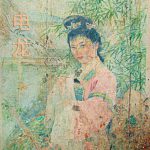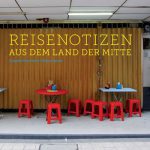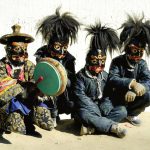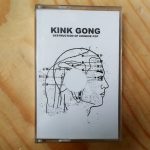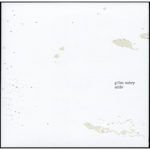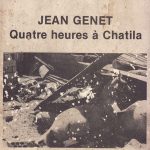Mien (Yao) Canon Singing In China, Vietnam, Laos
18,00 € VAT Included
Only 2 left in stock
“The YAO who call themselves MIEN , which means “people.” Yao is a Chinese expression that means “dog” or “savage.” , totalling 4 million people and are spread over the southern Chinese provinces of Guizhou, Guangxi, Yunnan. They also migrated to Vietnam, Laos and Thailand for centuries. Belonging to the Miao-Yao (Hmong Mien) ethno-linguistic family they have many subgroups usually defined according to colours of their traditional clothes. According to legend the Yao were founded by a dog who saved the life of the daughter of a Chinese emperor and thus was rewarded with her hand in marriage. Because of their Chinese origins, the Yao consider themselves to be culturally superior to other hill tribes, having incorporated elements of Taoism in their own beliefs and the use of Chinese written system for men. The Yao women produce wonderful embroidered cloth and that s the main reason why they re being noticed by outsiders.
A SIDE
IN LAOS
I used to escape home in Yunnan province for visa reasons and of course to discover singers, musicians in Laos, Luang Namtha is close to the Chinese boarder, I ve been crossing that boarder many times, witnessing the dramatic Chinese expansion on Lao territory.
Nam di village is easy to reach from Luang Namtha city, I first met a young LANTENE boy (that s how they re called by Laotians) who introduced me to village elders on a sunny morning, They agreed to find singers for me to record but first they needed to write down in ancient Chinese characters the content of the mythological story, the 3 old men who compiled the story, told 2 ladies the story in Moon language, they wrote it down in Lao language in order to sing it for me in their own language.
the LANTENE are a subgroup of the DARK BLUE (LAN TIEN in chinese) YAO . The People recorded here , moved to NAM DEE village in 1966 but their predecessors moved from China 100 years ago.
The sung version of the written text in ancient Chinese characters, refers to the mythological origin of the MOON, the story start from crossing the big ocean on 3 boats, one sank, the first one carried the people who became the MIEN, (red YAO) the second boat carried the ancestors of the MOON (dark blue YAO) enriched with various historical records including the inner migrations to new villages or the Vietnam war. There are 2 styles of singing, the day one (MAN NA JA SING) and the night one (BE JAM SING), the later being used here, is softer and has longer tones.
B SIDE
IN CHINA
1
2
note: titles of songs 1 and 2 are in chinese language
I discovered the area of Azhahe (southern Yunnan province above Vietnam) through WANG LILIANG a professional YI (NISU) musician in DISHI village and one day we took a walk through the forest to a black YAO traditional village. The area was officially discovered in 1979 and isolated from the Hans up to the 80s, where various ethnic groups like the YI (Nisu) the HANI (Baina Hani) or YAO lived in this beautiful landscape of rice terrasses shaped by those people . Those YAO ancient songs come from the ancient books kept by this family, some being well known and some being recited by reading the old book written in ancient Chinese characters.
IN VIETNAM
3
The YAO (Chinese term) are called DAO ( pronounced ZAO) by the Vietnamese. Nam Dam is the first village to develop community-based (homestay) tourism in Quan Ba, since 2012, as often when small scale tourism starts, the local people are eager to be discovered by outsiders, especially the young generation wishing to be less isolated… A Vietnamese TV crew had just been there a few days before to film it, the villagers just reproduce a part of the ceremony .”
Tracklist:
A1. Lan Pan Moon (Ay Jung Lan Pan Moon Khon Tang Di Tai)
A2. Kai Tian Pi Di (Open The Sky)
B1. Shan Ge (Mountain Song)
B2. Gap Choun – Dao Cham (Long Dress YAO)



